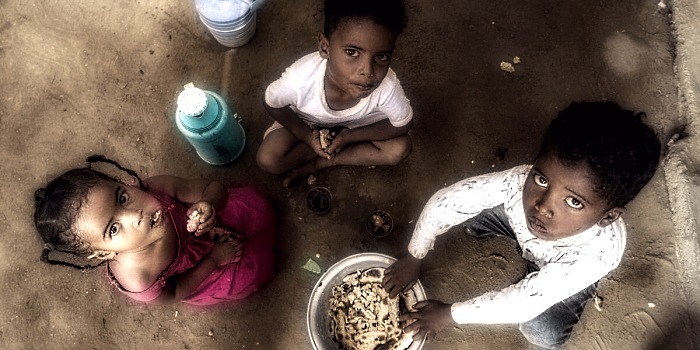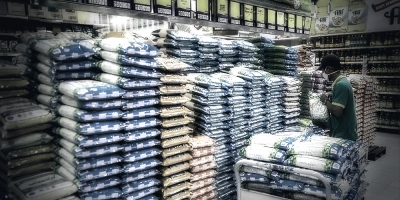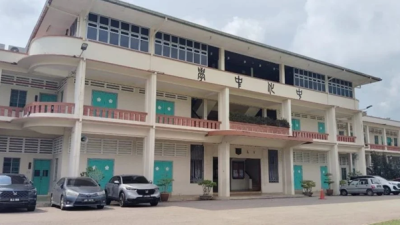Instead of wasting more time on the conference table, perhaps the agriculture ministry should seriously study how some countries have managed to boost their agricultural production and quality.
Prime minister Datuk Seri Ismail Sabri Yaakob brought forward this week’s cabinet meeting to Monday to discuss the issues of food shortage as well as spiraling inflation in a bid to map out short- and long-term solutions to address this global phenomenon.
The food shortage and inflation this time must be the one Malaysians feel the most intensely since the country’s independence. With the exception of fuel prices and a handful of controlled items, the prices of which are controlled by the government, everything else is getting more expensive now.
For example, prices of chicken have increased owing to a spike in chicken feed prices that squeezes farmers’ profitability and hence, production.
Globally, as many as 193 million people in 53 countries experienced severe food shortage last year. And this year, due to Russia’s invasion of Ukraine, food supply (barley, wheat, corn, sunflower seed, etc.) has been severely disrupted.
It is weird that global food shortage could actually be sparked by a war between just two countries, showing how vulnerable global food supply chain is.
Besides direct disruption in food supply, due to restrictions on Russia’s fertilizer export as a result of the war, coupled with climate change and other factors, this year’s food crisis is expected to last much longer than anticipated.
UN World Food Program executive director David Beasley has warned that hunger has reached unprecedented levels, with hundreds of millions of people in dozens of countries on the verge of starvation, adding that we need urgent funds to reverse the crisis before it’s too late.
Perhaps our country is not in the list of countries suffering severe food shortage, but we cannot escape inflation, skyrocketing prices and shortage of certain food items.
We registered RM2.2 trillion in external trade last year with a surplus of RM252.6 billion, both numbers being record highs. The record surplus was not so much attributed to larger export volumes in petroleum, palm oil and electronics but more aptly to our fast depreciating currency that buoys exports.
The ringgit has been trading at relatively low levels against the greenback for quite some years, and Malaysians must come to terms with the reality of costlier imports for some time.

When the world is peaceful without any war, supply of food will be adequate and increases in the prices of imported goods will not be so deeply felt.
But the moment the war breaks out, supply of food and other items will be badly impacted. Agricultural production will take the beating due to shortage in fertilizers while soaring oil prices arising from shortage of petroleum and natural gas have sent manufacturing and transportation costs sharply higher, hence inflation of global proportions.
There isn’t much the government can do to tackle the issues of food shortage and inflation. But for one thing, the government must strive to stabilize the ringgit exchange rate, say to about 1 to 4.0 against the dollar, in order to bring down the import cost.
Secondly, we must seek alternatives for food (or animal feed) or to stabilize the prices of necessities by way of rational subsidy mechanisms.
Thirdly, we must learn to cut expenses and wastage. According to a UN Environment Program (UNEP) report, some 1 billion tons of food was wasted globally in 2019, and as much as 17% of edible food ended up in trash cans.
As a long-term solution, Malaysia must work much harder to diversify its agriculture. Currently 4.85 million hectares of the country’s land area is used for plantation, of which oil palm takes up 41% of agricultural land, followed by rubber 33%, cocoa 7% and coconut 6%. As for rice that we feed on every day, only 12% of our agricultural land is used for its planting.
As a consequence, we only manage to produce 65% of the food we consume, while the remaining 35% has to be imported.
To achieve the goal of self sufficiency, we will need to drastically increase the area of rice plantation from 582,000 hectares now to 873,000 hectares.
A more pragmatic way of doing things is to emulate the success of agriculturally more developed countries in a bid to boost rice production.
Taiwan, for instance, produces 6,271 kg of rice for every hectare of rice field, almost twice of Malaysia’s 3,180 kg per hectare.
If we are able to boost our productivity, we will have a 30% surplus instead of a 35% shortfall!
If we can’t even do this, we won’t be able to solve our problem with more meetings.
Perhaps we should not waste more time talking about growing ketum. Instead of wasting time on the conference table, perhaps the agriculture ministry should seriously study how some countries have managed to boost their agricultural production and quality.
ADVERTISEMENT
ADVERTISEMENT








































